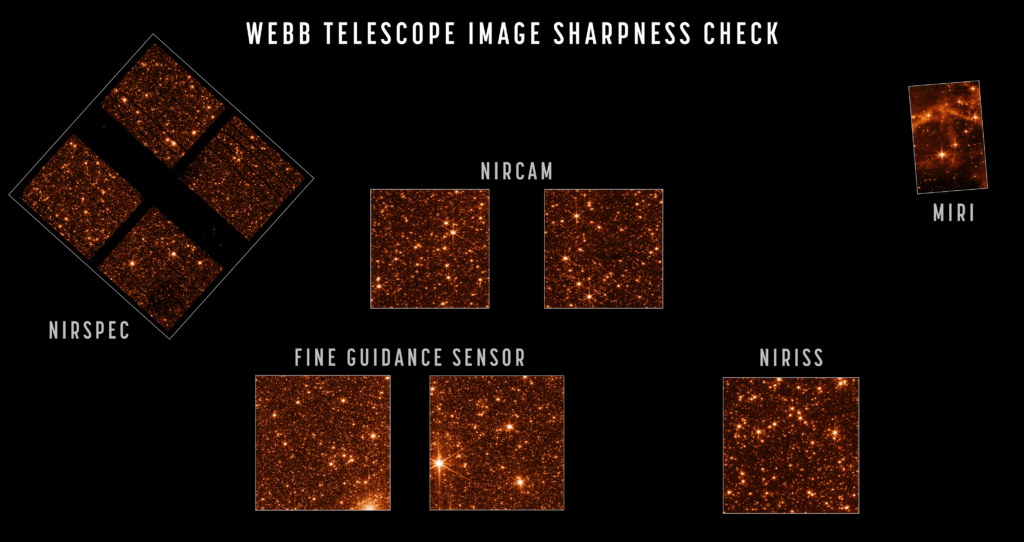The James Webb Space Telescope (JWST) has successfully completed the alignment process. Tests have shown that each of its four scientific instruments is capable of taking well-focused pictures. Thanks to this, the mission team made a unanimous decision to proceed to the phase of putting the telescope into operation. This process will take about two months, after which JWST will begin its scientific program.

As a confirmation of their success, the specialists of the mission support group published a series of images taken by JWST. The telescope’s aligned main mirror now directs fully focused light into each of its four scientific instruments. According to the engineers, the quality of their recent test images exceeds all expectations. In fact, JWST has already reached its diffraction limit. This means that the detail of the telescope’s images has reached a theoretically possible limit, determined by the size of its main and secondary mirrors.
Now the mission team is moving on to the final stage of preparing the telescope. In its course, each of the observatory’s scientific instruments, which is a set of sophisticated detectors, lenses and filters, will undergo a fine-tuning process. It will confirm the characteristics of the instruments and prepare them for the start of regular scientific observations.
It is also worth noting that although the alignment of the telescope has been completed, the engineers are planning to perform several additional operations. Thus, the JWST will be directed to different parts of the sky, which will lead to a change in the amount of solar radiation falling on it. This should confirm the thermal stability of the observatory when changing the purpose of observations. In addition, every two days engineers will check the degree of alignment of the segments of the main mirror of the telescope and, if necessary, make adjustments.
You can also read about how James Webb became one of the coldest objects in the Universe.
According to https://blogs.nasa.gov
Follow us on Twitter to get the most interesting space news in time
https://twitter.com/ust_magazine

